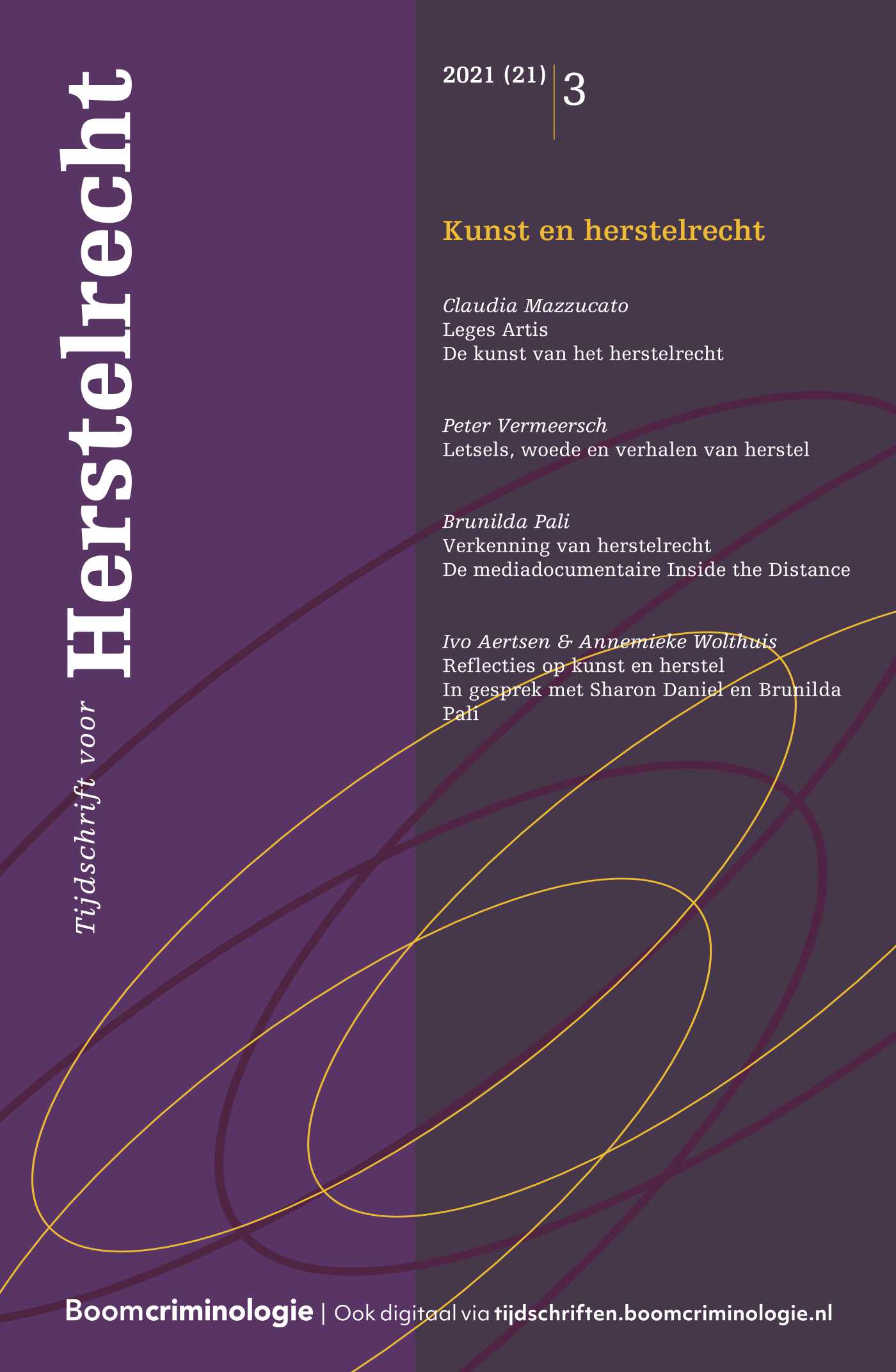|
Empirical research on restorative justice shows that offenders can apologise to victims. Because of the ritual component of restorative justice and the possible influence on the justice system, certain questions arise: how do victims perceive these apologies? Is it important for victims that these apologies are sincere? The aim of the article is to discuss these questions through three topics, namely the physical aspect of the ritual, the symbolic meaning for victims and the relation between the offender’s apologies and the victim’s reaction. |


Tijdschrift voor Herstelrecht
Meer op het gebied van Mediation en herstelrecht
Over dit tijdschriftMeld u zich hier aan voor de attendering op dit tijdschrift zodat u direct een mail ontvangt als er een nieuw digitaal nummer is verschenen en u de artikelen online kunt lezen.
| Column |
|
| Auteurs | Frans Douw |
| Auteursinformatie |
| Redactioneel |
Het ‘oprechte’ excuusPardonneren in een gevictimaliseerde cultuur |
| Auteurs | Janny Dierx en Bas van Stokkom |
| Auteursinformatie |
| Artikel |
Het verontschuldigingsritueel en herstelrechtHet slachtofferperspectief |
| Trefwoorden | apology ritual, The victim perspective, Sincerity, Physical aspect of apology, symbolic meaning of apology |
| Auteurs | Inge Vanfraechem, Daniela Bolívar en Ivo Aertsen |
| SamenvattingAuteursinformatie |
| Artikel |
Mijn excuses! – Wat jongeren kunnen leren van het excuusgesprek in de Halt-afdoening |
| Trefwoorden | Young offenders, Halt, extra-judicial intervention, efficacy of offering an apology, moral norms |
| Auteurs | Wendy Buysse en Manja Abraham |
| SamenvattingAuteursinformatie |
|
The Halt-intervention is an extra-judicial intervention for young people who have committed a minor offense. This article zooms in on the results of a literature review concerning the efficacy of offering an apology, one of the core elements of the Halt-intervention. Offering an apology leads to more insight into the consequences of their behavior and it increases the sense of moral norms. Shame and guilt play a crucial role in this process. The effect of the excuse can be increased by good mediation between perpetrator and victim, good preparation of the conversation, and the drafting of a contract. These instructions can also be applied when offering an apology in other interventions. |
| Artikel |
Jonge daders: worstelen met sorry-zeggenIs oprecht spijt betuigen doenlijk? |
| Trefwoorden | Young offenders, Remorse, Sincerity, Perceptions-mismatch, victims |
| Auteurs | Bas van Stokkom |
| SamenvattingAuteursinformatie |
|
The apologies offered by young offenders in restorative justice conferences are often of poor quality. In this article the difficulties that accompany the offering of excuses are discussed. Offenders sometimes lack the language skills to pronounce an adequate apology, are anxious or insecure or believe that they have not been treated fairly. The mediation setting itself also has effects: sometimes perpetrators feel intimidated and feel compelled to say something that resembles an excuse. A related problem is that the perceptions about the sincerity of the apology can vary considerably. This perception-mismatch also occurs among victims: what one victim considers sincere is ‘fake’ for another. Many people |
| Discussie |
Waarom ‘Sorry, ik zal het nooit meer doen’ nog geen verontschuldiging is |
| Auteurs | Simon Groen |
| Auteursinformatie |
| Boekbespreking |
Vergeving en verontschuldiging vóórleven |
| Auteurs | Janny Dierx |
| Auteursinformatie |
| Boekbespreking |
To be is to be connected: waarom vergeving een plaats verdient in het strafrecht |
| Auteurs | Anneke van Hoek |
| Auteursinformatie |

